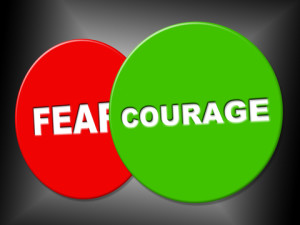 “Fear is contagious. But so is courage,” concluded Glenn Harlan Reynolds last week in USA Today. Reynolds was reporting on the terrorist attack on a French high-speed train in which three American friends on holiday quickly subdued a Moroccan gunman, saved the life of his badly-wounded gunshot victim, and probably rescued most of their 550 fellow passengers from death and terror.
“Fear is contagious. But so is courage,” concluded Glenn Harlan Reynolds last week in USA Today. Reynolds was reporting on the terrorist attack on a French high-speed train in which three American friends on holiday quickly subdued a Moroccan gunman, saved the life of his badly-wounded gunshot victim, and probably rescued most of their 550 fellow passengers from death and terror.
What I didn’t know is that British businessman Chris Norman had come forward to help the Americans. Norman told the Fiscal Times that when the shooting began, “I was frankly, dead scared.” He quickly hid. But seeing the moral courage and physical bravery of three young Americans, the 62-year old grandfather came from hiding and retrieved ties and belts from silent, fear-paralyzed passengers. He then helped bind the wrists and ankles of the furiously fighting assailant, a man who was on three Euro-security watch lists, had an AK-47, eight 30-round magazines, a semi-automatic handgun, and a box cutter, with which he slashed Spencer Stone, the American closest to the terrorist.
In Courage: The Backbone of Leadership, I wrote that we operate in a culture of fear. We use the modern terms, “conflict avoidance,” to dignify cowardice – an ancient, morally convicting word that might have seemed insensitive to cowards. Every day, in terror of discomfort and in fear of disapproval, we avoid difficult personal situations that call for well-spoken truths and respectful interventions. (Failure to speak up has caused our massive economic upheavals, depressions and recessions.) Several times every day, we face the River of Our Fears and can look the other way, or, act rightly. Chris Norman experienced the impulse for personal survival. But seeing courage in action he was reminded of his better self.
Churchill deemed courage “the first of all human qualities, for it alone guarantees the existence of the others.” Courage wipes clean the cobwebs of our naturally fearful and avoidant selves. We are wired to act heroically but must cultivate those neural pathways with grand intention lest our emotions dictate our lives. That’s why we can’t help but be inspired by courage and to imitate it until we demonstrate it.
The age of heroism has not passed. It is here, before us, for in truth, no generation, regardless of war, peace, depression, or prosperity, is spared the need to demonstrate courage on the ever-watched stage of our personal and public lives.
Thank you to three California buddies since childhood – Airman 1C Spencer Stone, Infantryman SP4 Alek Skarlatos, just back from Afghanistan, and brave student Anthony Sadler – for demonstrating courage regardless of risk to your self-interest. Thank you to Chris Norman, for crossing your River of Fear.
Courage, said Aristotle, is a learned set of practiced skills with which, like playing the violin or playing goalie, we are not born. If you want to learn and practice the skills to build habits of courage and to construct strong and straight backs in your workplace, home, community, and personal life, I challenge you to read Courage: The Backbone of Leadership. It was written by a recovering coward with a weak and scoliosis-bent spine.



